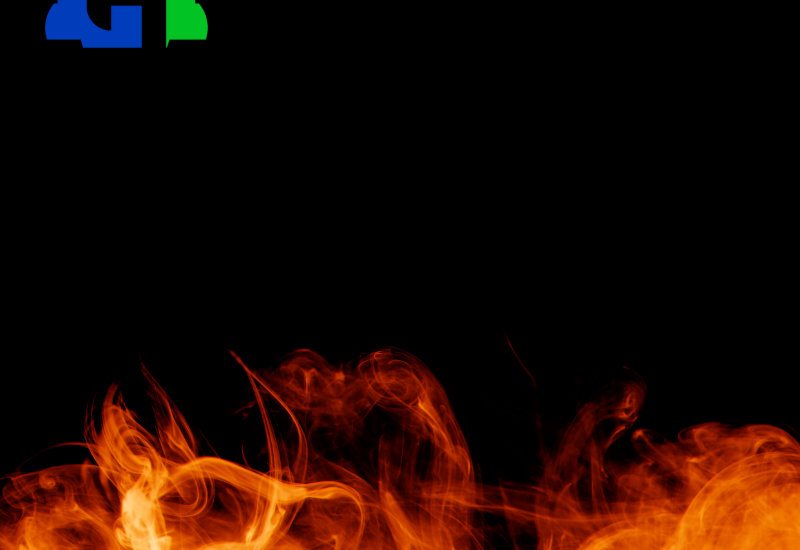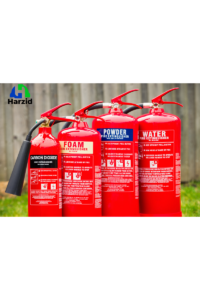
When it comes to fire safety, one of the most important things to understand is that not all fires are the same. Fires are categorized into different classes based on the type of material that is burning, and each class requires a specific method of extinguishing. Using the wrong method to put out a fire can not only be ineffective but may also worsen the situation. Let’s explore the six classes of fire and how to safely deal with each one.

1. Class A: Fires Involving Solids
Class A fires are among the most common types, involving solid materials like wood, paper, cloth, rubber, and some plastics. These materials typically leave behind ash after burning, which is a good way to remember this class: A for Ash.
Extinguishing Method: Water is the most effective agent for Class A fires as it cools the flames, reducing the heat and stopping the fire from spreading. Foam extinguishers or dry powder can also be effective.
Key Tip: Make sure the fire is completely out before leaving the area, as embers can reignite.
2. Class B: Fires Involving Liquids
Class B fires are fuelled by flammable or combustible liquids such as petrol, oil, alcohol, paints, and solvents. These fires are dangerous because liquids spread quickly and are highly volatile.
Extinguishing Method: Foam or dry powder extinguishers work best for Class B fires, as they smother the flames and cut off the oxygen supply. Water should not be used, as it can cause the flammable liquids to spread further.
Key Tip: Always keep flammable liquids stored in properly sealed containers away from heat sources.
3. Class C: Fires Involving Gases
Class C fires are caused by flammable gases such as propane, butane, methane, and hydrogen. These fires can lead to powerful explosions if not handled correctly, making them especially dangerous in confined spaces.
Extinguishing Method: Dry powder extinguishers are the best choice for Class C fires, as they can disrupt the chemical reaction of the fire. In some cases, turning off the gas supply can stop the fire from growing.
Key Tip: Evacuate the area and let trained professionals deal with Class C fires, as gas-related fires can escalate quickly.
4. Class D: Fires Involving Metals
Class D fires involve combustible metals such as magnesium, aluminium, titanium, and sodium. These fires are usually found in industrial settings, such as factories or laboratories, where these metals are handled.
Extinguishing Method: Specialized Class D powder extinguishers are used for these fires. The powder works by absorbing the heat and preventing the chemical reaction from continuing. Never use water on a Class D fire, as it can cause explosive reactions.
Key Tip: If you work in an environment where combustible metals are present, ensure there are specific extinguishers available.
5. Class E: Electrical Fires
Although Class E is sometimes merged with other classes, it specifically involves fires caused by electrical equipment, such as computers, wiring, or power tools. Electrical fires are extremely dangerous, as they pose the risk of electrocution.
Extinguishing Method: Carbon dioxide (CO2) and dry powder extinguishers are ideal for electrical fires. CO2 works by displacing the oxygen around the fire, suffocating the flames without damaging electrical equipment. Dry powder is also non-conductive and can suppress flames effectively.
Key Tip: Always switch off the power source if safe to do so before attempting to extinguish an electrical fire.
6. Class F: Fires Involving Cooking Oils and Fats
Class F fires are common in kitchens and involve cooking oils and fats, such as those used in deep fryers. These fires can reach extremely high temperatures, making them difficult to control.
Extinguishing Method: Wet chemical extinguishers are specifically designed for Class F fires. They work by cooling the oil and creating a foam layer that prevents re-ignition. Never use water on a Class F fire, as it can cause the hot oil to splatter and spread the flames.
Key Tip: Keep a wet chemical extinguisher or fire blanket in the kitchen to handle potential Class F fires.
Conclusion:
Understanding the different classes of fire can help you respond appropriately in an emergency, potentially saving lives and property. Make sure you have the correct fire extinguishers available for the types of fires you are most likely to encounter in your home, office, or workplace. Regular fire safety training and equipment checks are essential for preparedness, as fire situations can escalate rapidly.
By knowing the six classes of fire and their proper extinguishing methods, you are better equipped to protect yourself and others in the event of a fire.



